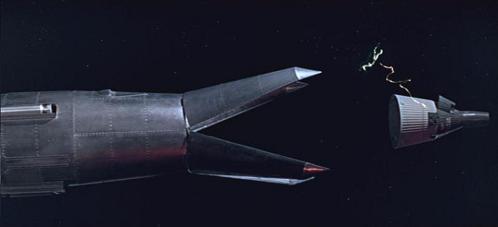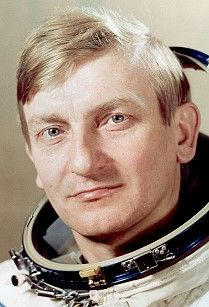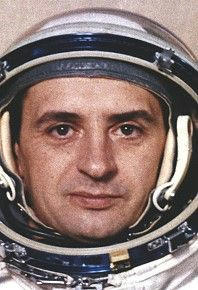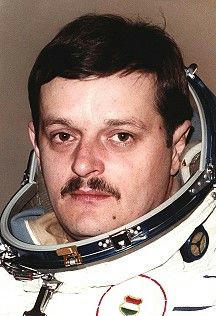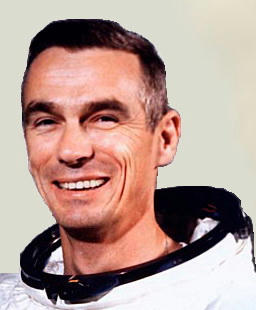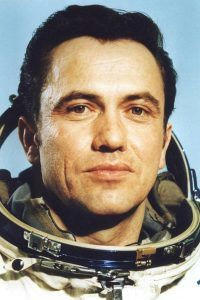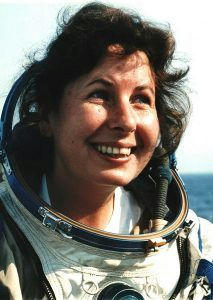OK, until I make more images directly related to ATL rocketry, here's something smaller that I've already made a few months ago. Some of the photos are more doctored than others. In-universe:
----
The "Patria Five", the first five stellonauts of the VUSP
Rafal "Rafek" Gorski, first Pole and first central European in LEO, father of future first VUSP moonwalker Edward Gorski
Zdeněk Koutný, first Czech stellonaut in LEO, second
Patria manned flight
Frigyes Kóbor, first Hungarian stellonaut in LEO, third
Patria manned flight
Emil Čerňan, first Slovak stellonaut in LEO, fourth
Patria manned flight
Vsevolod Vasilko, first Transcarpathian stellonaut in LEO, fifth
Patria manned flight
----
Patria capsule flights post-"Five"
Orsolya 'Orsi' Jakab, first female and second Hungarian stellonaut in LEO, sixth
Patria manned flight
----
The "Patria Five" is like the OTL
Mercury Seven, though with an obviously more central European flavour.

Each of the five astronauts represented one of the five member states of the Visegrad Union. It wasn't merely a PR stunt, since all five countries had worked together on developing a central European launch capability, as well as the various spaceflight technology required for it. Due to a smaller incentive to compete with another country in manned spaceflight, the VUSP took its time. This led to the VUSP's first manned flights being directly to LEO, i.e. more
in the vein of Gagarin than
Alan Shepard.

Jakab was the first female stellonaut, as well as the second Hungarian one, and the first LEO traveler after the initial run of the Patria Five. As for the spacesuits worn aboard the
Patria capsules, see
this link (also provided in my previous post). You can see the flight suits are nicely blueish.


However, the photos seen in this post were made somewhat later after the conclusion of the
Patria programme. All six of stellonauts are shown here in
Concord capsule era spacesuits.
Amusing factoid: The WN-13 "Friday" launcher that carried the
Patria class capsules into orbit, is an upgraded development of the previous WN-12 "Zodiac", and both of them look rather similar to an OTL
R-7 Semyorka. (Let's just say that a certain
Sergey Pavlovich fled Russia once the interwar chaos started settling in...

) And the
Patria-s, as I've noted earlier, are more
Mercury-like than
Vostok-like. Yeah, in what has to be the ultimate irony from our OTL perspective, the VUSP is launching an American-looking capsule aboard a Russian-looking rocket.

 Popculture trivia note:
Popculture trivia note:
The
Patria and
Concord names for spacecraft, as well as the names of the first VU stellonauts, would later be acknowledged in the long-running
Visegrad Space Guard science fiction franchise. (A central European take on the "explore the universe and keep the peace" premise. Basically, this TL's
Star Trek.)
Who's who for real, in OTL:
1.
Miroslaw "Mirek" Hermaszewki, first Polish astronaut
2.
Oldřich Pelczak, backup for first Czech and Czechoslovak astronaut Vladimír Remek
3.
Béla Magyari, backup for first Hungarian astronaut Bertalan Farkas
4.
Eugene Cernan, who I think needs no introduction (Emil is an ATL and Slovak-born version of him, with the same parents - it's a bit of a TL-191 "Daniel MacArthur instead of Douglas MacArthur" situation)
5.
Leonid Ivanovich Popov, Ukrainian astronaut, flew on multiple Salyut programme missions
6.
Larisa Grigoriyevna Pozharskaya, Russian astronaut, civilian physician cosmonaut





